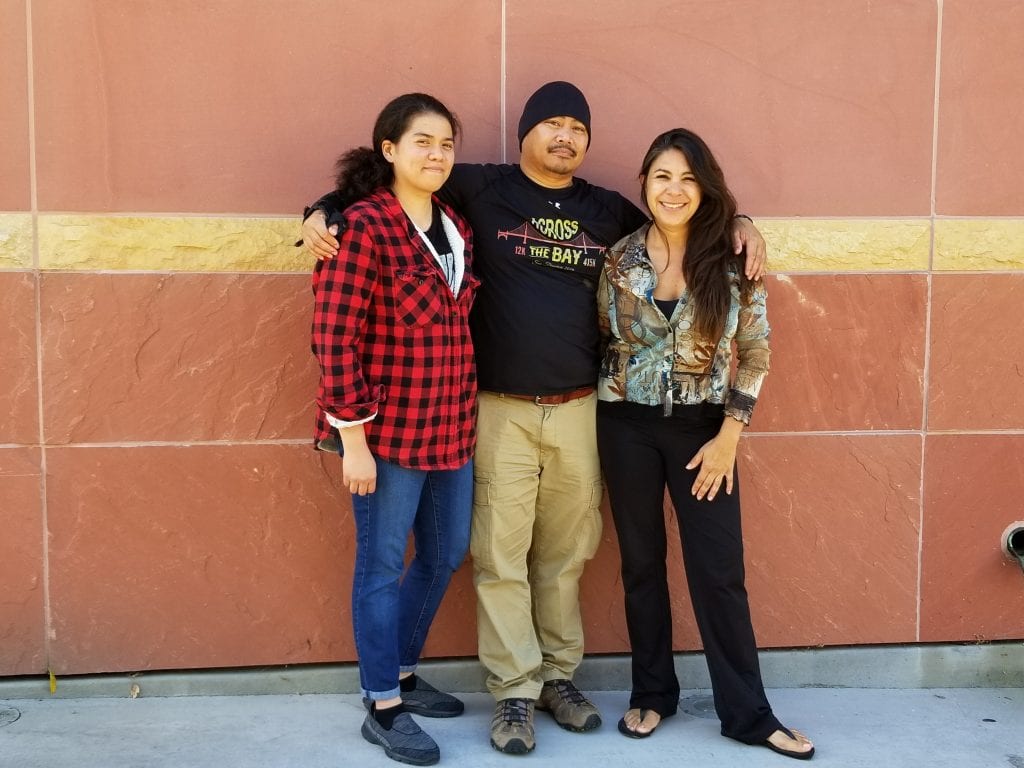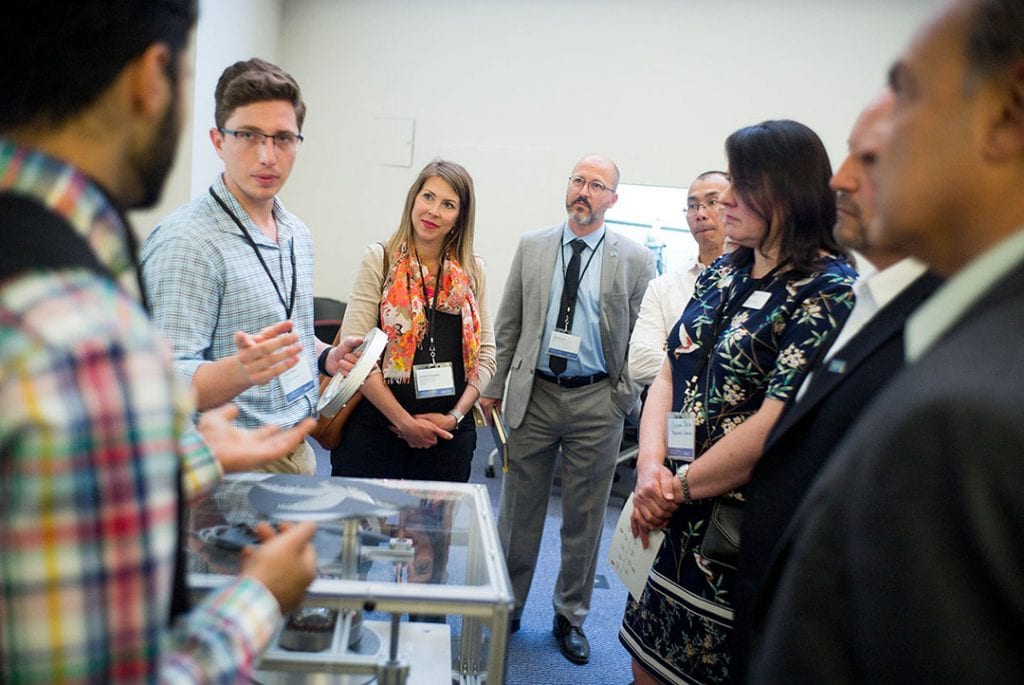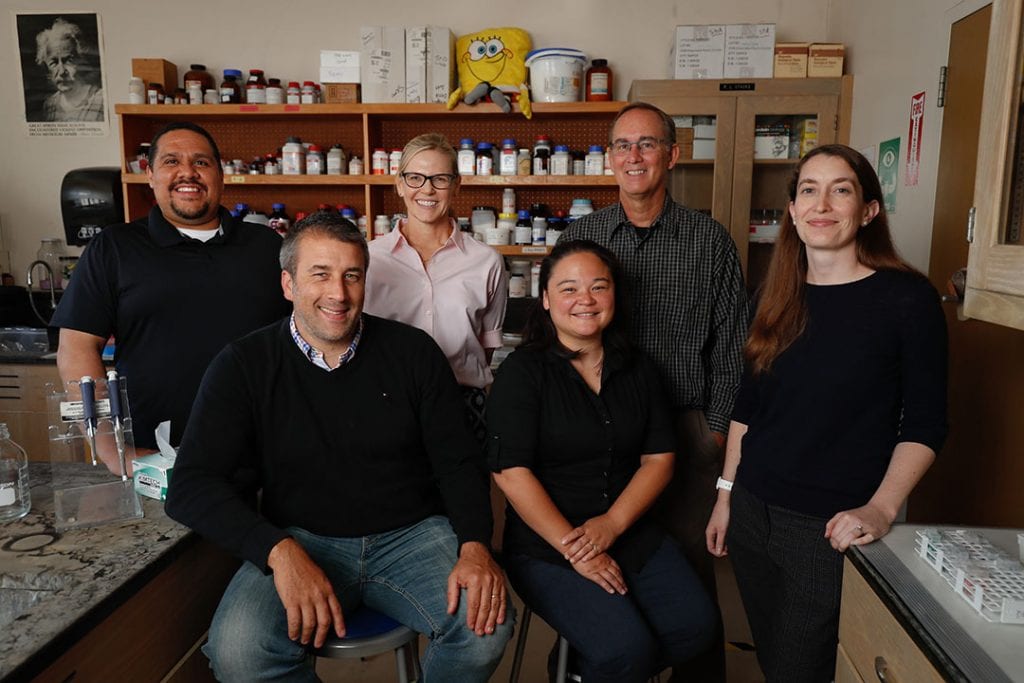-
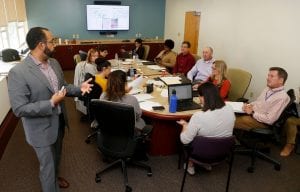
-
Don Fraser, Jr., left, Education Designer, director of Micro-Credentialing, of Education Design Lab, gives a presentation to SJSU faculty, and members of Cisco and Enterprise on the campus of San Jose State University on Monday, Dec. 10, 2018. ( Josie Lepe/San Jose State University )
-

-
Lyzett Levenant, a senior biology major, participated in a focus group with Education Design Lab to help SJSU select two digital badges to pilot in the spring. ( Josie Lepe/San Jose State University )
-
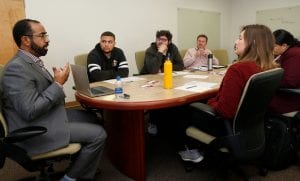
-
Don Fraser, Jr., left, education designer, director of micro-credentialing, of Education Design Lab, explains the digital badge concept to a student focus group. ( Josie Lepe/San Jose State University )
-

-
Cards display descriptions of some of the skills needed to acquire the eight digital badges Education Design Lab has created. ( Josie Lepe/San Jose State University )
San Jose State University is pilot testing a new 21st Century Skills Badge program in collaboration with Education Design Lab and two of SJSU’s top employers: Cisco and Enterprise Holdings. The effort aims to identify which skills are most needed for entry-level positions with these employers and validate that students who have earned badges for the desired skills successfully transition to work with the employers.
SJSU is one of seven institutions selected to work with Education Design Lab, a nonprofit that specializes in designing and implementing new learning models, to evaluate the efficacy of the digital skills badge program that has been in development for nearly four years.
Don Fraser, an education designer and director of 21st Century Skills Badging, visited San Jose State University Dec. 10 to host a focus group with representatives from employer partners, SJSU’s Career Center, faculty and administrators, as well as a second workshop with students.
“We established this program to address the school-to-work pipeline,” Fraser said, of the #TeeUpTheSkills campaign. The idea is that employers are looking for a skill set that resembles a T – with critical skills across the top of the t that are needed in all fields, and technical skills that are unique to each industry or position that form the base of the T.
Education Design Lab has developed curriculum around eight skills that they identify as key needs for employers from all disciplines including initiative, collaboration, critical thinking, resilience, oral communication, empathy, intercultural fluency and creative problem-solving.
During the first focus group with employers, Fraser walked them through an exercise that helped them identify the top three or four skills needed for their positions.
During the focus group with seniors who will graduate in 2019, Fraser helped students identify what they thought employees would most want to see, what activities they are involved in that might help them develop some of the skills listed, and what skills they most would want to develop.
Christian Orozco, Justice Studies, ’19, said he could see critical thinking developing as he watches sports.
“I am trying to identify patterns in mixed martial arts, so I can see what could the other person do to adapt to the moves,” he said, of one of the subskills under critical thinking.
Annol Pannu, Business, HR concentration, ’19, saw one of the skills in the Ted Talks she watches.
“I am gathering and assessing relevant information,” she said.
Anita Manuel, the associate director of career education in SJSU’s Career Center, said the university will pilot two of the eight badges in the spring. The badge areas will be selected based on areas that line up for the employee partners and students.
“We want this to be accessible to all students, but as we pilot it we may reach out to capstone courses or senior seminars,” Manuel said, noting that the badges will likely be available as modules in Canvas, SJSU’s learning management system. “The goal is to have at least 50 students participate in the spring where students can get feedback from the Career Center, peers, faculty and employer partners.”
“New, AI-driven recruiting methods enable employers to assess fit for roles based on disaggregated bundles of skills rather than college majors alone,” said Catherine Voss Plaxton, SJSU Career Center director. “In other words, the sociology student may be a perfect fit for a user-experience position if they can provide evidence they have right mix of skills. The process of earning a 21st Century Skills Badge can be a strong way to shift student understanding of those skills from the abstract to the specific behaviors valued in workplaces.”
Meg Virick, interim associate dean of Undergraduate Programs in the Lucas College and Graduate School of Business, attended the focus group with other colleagues.
“Preparing students for the workforce has always been a high priority for us, and the focus group held Dec. 10 exemplified that effort – bringing together representatives from industry, academia and the non-profit world around the table,” she said.




